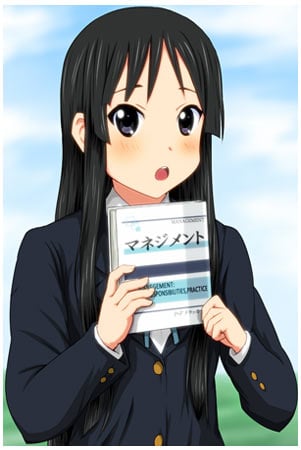Like Turkish, Basque and Korean, the Japanese language is an “agglutinative” language, which just means that a lot of information is stored in the verb’s conjugation. This is good in a way, since some of the ridiculously complex grammar in English — “she would have been able to go if her car hadn’t been stolen” — just plain don’t exist in Japanese. But it unfortunately means that for every given verb, you’ve got quite a few different forms to memorize. For a word like “to eat” you have 食べる taberu (the “informal” or dictionary form, since that’s what’s listed in a dictionary, which covers both “I eat (everyday)” and “I will eat”), and 食べます tabemasu (the “formal” form, used in situations when more politeness is called for), 食べない・食べません tabenai / tabemasen (negative informal/formal forms meaning “I will not eat”), 食べた・食べました tabeta / tabemashita (informal/formal past tense, “I ate it”), 食べよう・食べましょう tabeyo / tabemashou (informal/formal forms meaning “let’s eat”), and 食べろ・食べなさい tabero / tabenasai (informal/formal command forms, “eat!”). There are other forms that express “to be able to eat,” one for passive voice (“the food was eaten by me”), plus a few I’m probably forgetting. Learning these forms seemed daunting to me at first, but they all follow easy-to-pick-up patterns that you can tackle one at a time. Incidentally we have some pretty cool study books for anyone wanting to learn Japanese, including an awesome monthly magazine published in English and Japanese plus a book that specifically helps you memorize verb forms.

Conjugating verbs like “to eat” is one of the more arduous tasks of learning Japanese.















